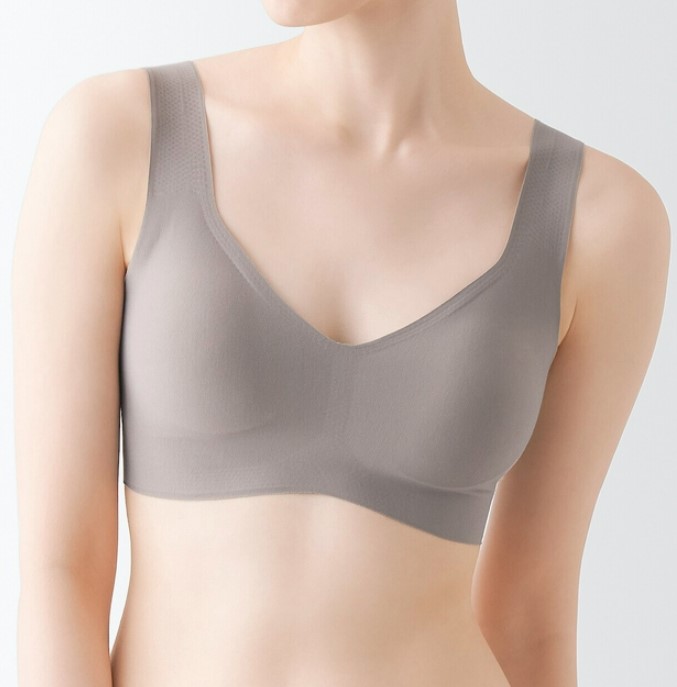
STITCH-FREE COMFORT
Sew-free Technologies for Intimate Apparel
Traditional sewing methods have long been the foundation of lingerie and undergarment production. However, a wave of sew-free technologies has been sweeping through the industry, promising greater efficiency, comfort, and style for intimate apparel entrepreneurs and start-ups. These cutting-edge techniques, such as ultrasonic welding, adhesive bonding, and laser seaming, are transforming the way intimate apparel is manufactured, providing a plethora of benefits that cater to the demands of both consumers and the industry.
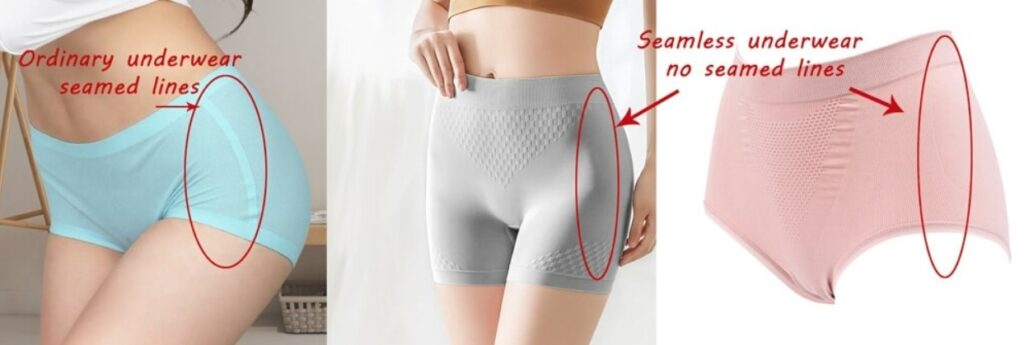
SEW-FREE TECHNOLOGIES: AN OVERVIEW
Sewing thread has been the go-to method for joining cut components in intimate apparel. While it has served its purpose well, it does come with limitations. Traditional sewing can create perforated seam structures and openings that compromise the fabric’s integrity, especially in waterproof garments. Enter sew-free technologies, which not only eliminate these issues but also offer a myriad of benefits:
- Reduced Garment Weight: Sew-free technologies reduce the need for seam allowances, resulting in lighter garments, perfect for enhancing comfort.
- Sleek Appearance: These methods offer a seamless and elegant look, giving intimate apparel a premium feel.
- Excellent Elasticity and Resilience: Sew-free seams maintain their elasticity and resilience, ensuring a comfortable fit and durability.
- Enhanced Comfort: The absence of traditional seams means no more discomfort from stitching lines or fraying yarns.
As a result, sew-free technologies have found their way into the production of not only sportswear but also intimate apparel. Now, let’s delve into the specific sew-free techniques that revolutionised this industry.
ULTRASONIC WELDING
Ultrasonic welding, an advanced technique in textile joining, utilizes high-frequency mechanical vibrations to create frictional heat at the joint interface, melting and bonding thermoplastic materials seamlessly. Here’s how it works:
- Fabric is fed between a stationary anvil or a moving pattern wheel and a vibrating ultrasonic horn.
- Mechanical vibrations, typically between 20-40 kHz, generate frictional heat at the joint.
- The resulting temperature increase allows for the melting and bonding of materials.
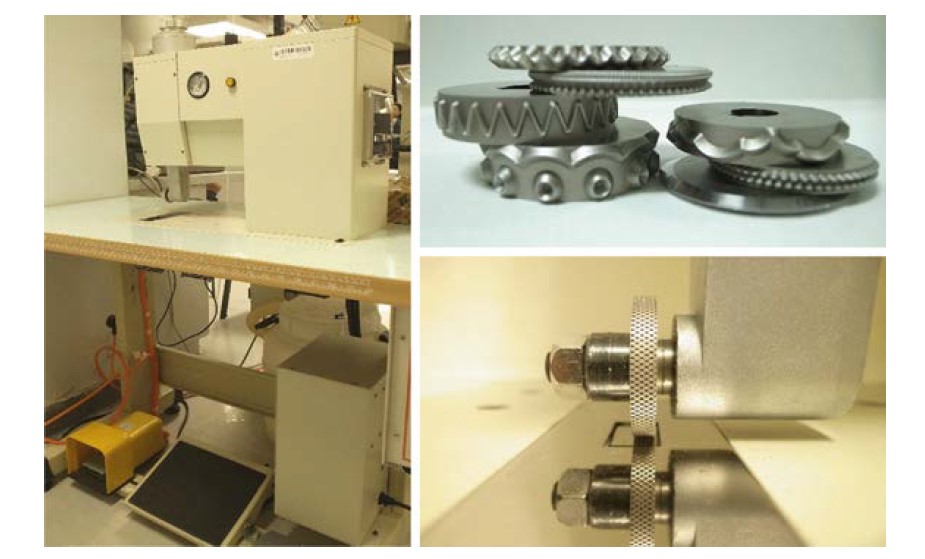
Key factors influencing the process include amplitude, pressure, and welding time. Adjusting these parameters allows for control over temperature, which is crucial for achieving the desired seam strength without material degradation.
The design of the welding horn (or anvil) plays a pivotal role, influencing the success of the welding process and the seam’s properties. Various horn pattern designs can create distinctive lace effects or stitching-like appearances on fabrics.
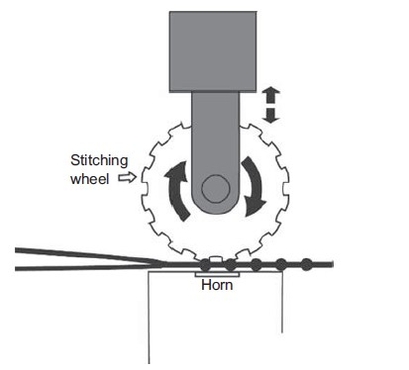
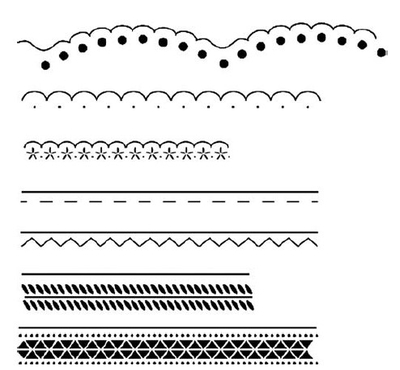
Ultrasonic welding finds applications in seaming, cutting, slitting, trimming, and sealing in the intimate apparel industry. It’s used for tasks like edge cutting, sealing ribbons, bra strap sealing, and mounting strap loops.
ADHESIVE BONDING
Heat-sealing tape, a thermoplastic adhesive film, has proven highly useful in intimate apparel manufacturing. Applied using a tape-sealing machine, it offers a multitude of advantages:
- Waterproofing seams without the need for traditional stitching.
- Reducing garment weight, enhancing aesthetics, and providing a sleek appearance.
- Offering excellent seam performance during stretch and recovery.
- Minimizing manufacturing costs due to reduced labor.

Adhesive bonding can create strong, seamless edges for bra cups, ribbons, and hook-and-eye tabs, improving comfort and seam smoothness. Selection of the proper adhesive tape depends on factors such as fabric properties, end use, and desired seam performance. Adhesives with high recovery properties are ideal for intimate apparel, ensuring shape retention even after repeated wash-and-wear cycles.
ATTACHMENT OF ORNAMENTATION
Beyond seams, sew-free technologies extend to embellishments and ornamentation. Sew-free technologies also find applications in adding ornamentation like rhinestones to fabric. Hot-fix rhinestones, equipped with heat-sensitive glue on the back, can be easily attached using heat.
Computerized machines can work at high speeds, ensuring precision and stability in the process. Additionally, sublimation and motif transfer can efficiently apply a variety of designs to intimate apparel.


LASER CUTTING, ENGRAVING, AND WELDING
Laser technology has rapidly gained ground in the fashion and textile industries. The process of laser cutting, engraving, and welding provide unmatched speed, accuracy, flexibility, and automation. Those process involves focusing a laser beam onto a small spot, rapidly increasing the material’s temperature to vaporize it. The benefits of laser technology include:
- High-quality, consistent cutting and engraving.
- No tool production costs or fabric damage.
- Precision in creating unique design features.
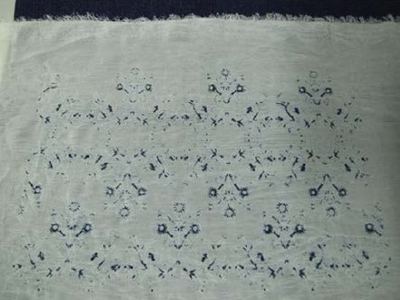

Laser engraving allows for intricate patterns and color fading effects on fabrics. Laser welding, similar to ultrasonic welding, is used to join fabrics and seal seams in waterproof garments.
Recent Innovations
As consumer demands and environmental considerations continue to evolve, so do sew-free technologies. Innovations like multibeam laser technology have been introduced to increase productivity and design flexibility while minimizing environmental impact. Multicolor laser engraving techniques and color laser engraving methods offer exciting possibilities for creating intricate, colorful designs on fabrics.
As these technologies continue to evolve, the possibilities for creativity and efficiency in intimate apparel manufacturing are boundless. Embracing these advancements can undoubtedly set your brand apart in an industry where innovation is the key to success. So, what do you think? We would love to hear your views.
